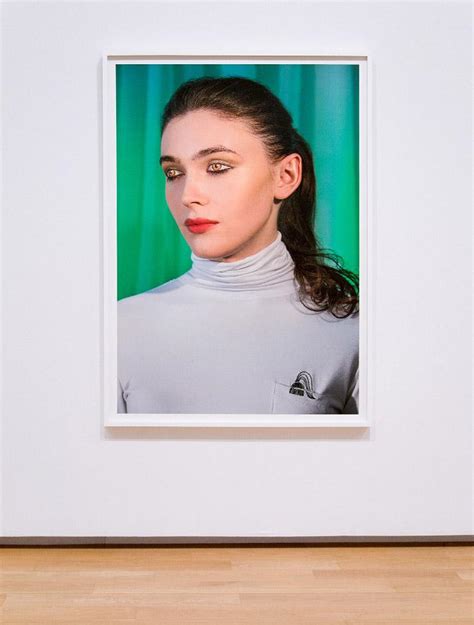Top 60 Quotes & Sayings by Laurie Simmons
Explore popular quotes and sayings by an American artist Laurie Simmons.
Last updated on December 22, 2024.
The challenge has always been to wrest emotion out of a [doll's] face that we think of as only having one emotion. It's moving a light, moving my camera; it's just this mental investment that I make, and suddenly, everything changes. Parenthetically, I have to say, I don't particularly like dolls, nor have I ever liked them. That's something I really wanted to get out there right away.
I teach a graduate photo seminar at Yale, and I sometimes feel so overwhelmed by the task the students set before themselves to be artists, because - it seems so quaint, but when I picked up a camera with a group of other women, I'm not gonna say it was a radical act, but we were certainly doing it in some sort of defiance of, or reaction to, a male-dominated world of painting.
When you're getting ready, you finally reach a point where your clothes are right and your hair and makeup are right, and you're not comparing yourself to anyone. It's a really great moment. Then you get to the party and it's like, "Oh my god, I'm wearing the wrong thing! I'm garish!" or "I'm underdressed!"
I do remember at my very first opening in 1979 another artist coming up to me, and he was haranguing me, saying, "Did you really intend for these things to be so dumb? You just put it there and took a picture of it." He wouldn't let it go. So that's what made me think about the dumbness aspect more.
I feel like I've finally got to this place that I really want to be. The place where, in my fantasy, the characters just get up and walk around - this interstitial place between humans and dolls. But I also feel like, where am I supposed to go from here? Because this feels like the place I've always wanted to be, for my whole life of shooting.
When I first came to New York, in the '70s, artists were certainly divided about the Andy Warhol persona, and about the work. I thought it was utterly cool - I thought the Factory was utterly glamorous - but there were a lot of artists I really admired and respected who were older that kind of dismissed it, couldn't get it, and felt that there was a lack of seriousness about it.
I realized early on that artifice attracted me to an image more than any other quality - I mean artifice in the sense of staging and heightened color and exaggerated lighting, not a surreal or fictive moment... I think the lighting and feeling of Cinemascope, the movies I saw as a kid, always stayed with me as a kind of glorious vision of reality.
The visual world has blown up, the world of writing has blown up; there's so much text online. Anyone and everyone can express themselves. It's a lot to think about as an artist. Also, that the persona of the artist might actually be of some importance. When I came of age, it was important to be quiet and hang back and be mysterious. I knew artists who didn't even want to show up at their own openings. They never wanted to have their picture taken, didn't want to autograph a book, didn't want to answer a question. I came of age in a world where it was "Let the work speak for itself."
I use people that are close to me, like a studio assistant or a friend, someone I know who's going to really enjoy it. It's important to me to have men inside there, too, because so many dollers are men. It's putting me into a pretty odd headspace, the shooting, because I understand the motivation of these dollers to dress up. There's a way that you start to prefer the reality of that world to your own world. It's so much more beautiful.
I feel like I spent so much time trying to understand my identity and my identity as an artist. But when all is said and done, at this age, I feel the most like I felt when I was 11. And all those talents I had when I was 11 and 12 - I'm letting them sort of happen again. I can't speak for men, but for women - we go back to a kind of pre-adolescent state when we were superfree and supercool.
























